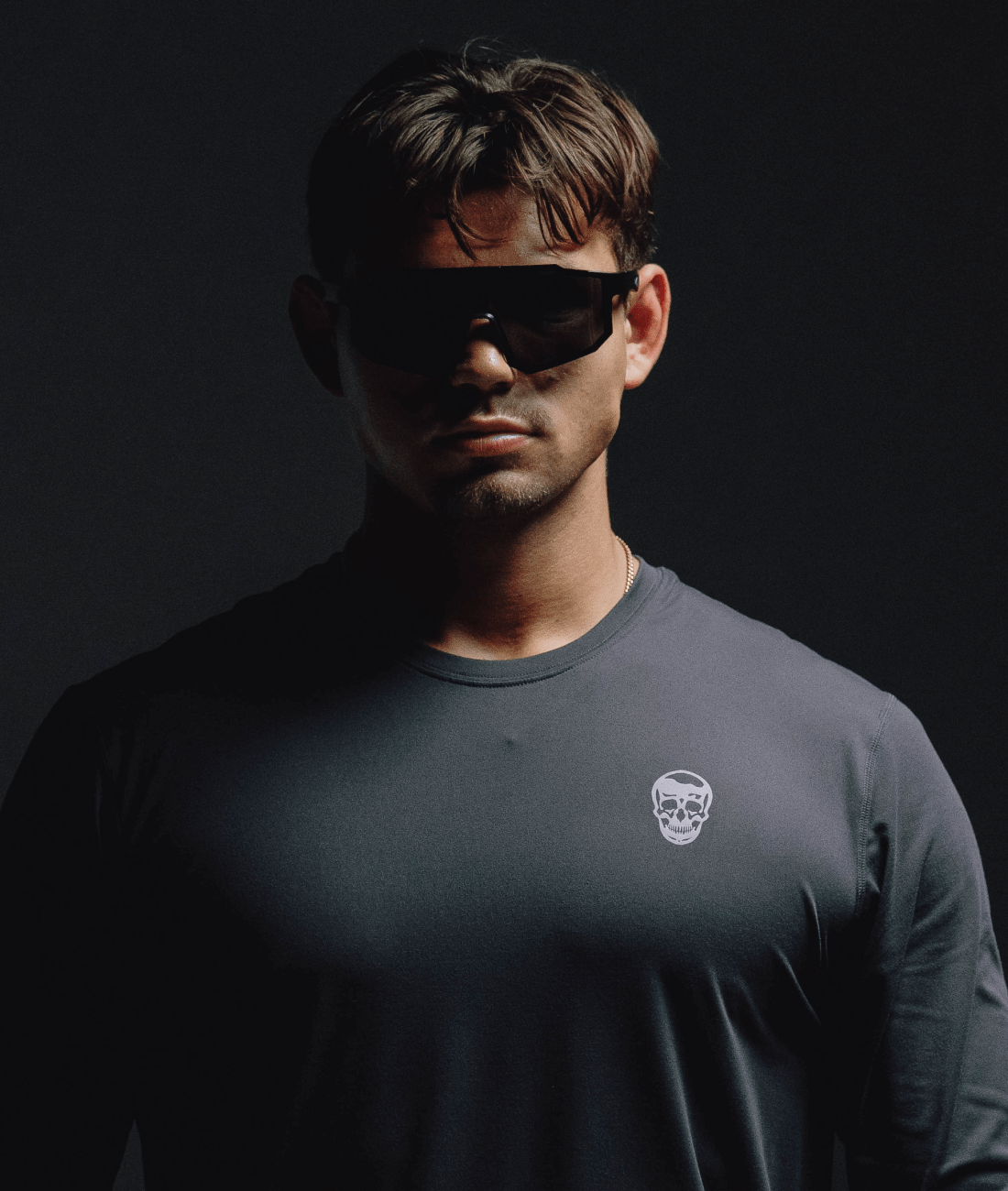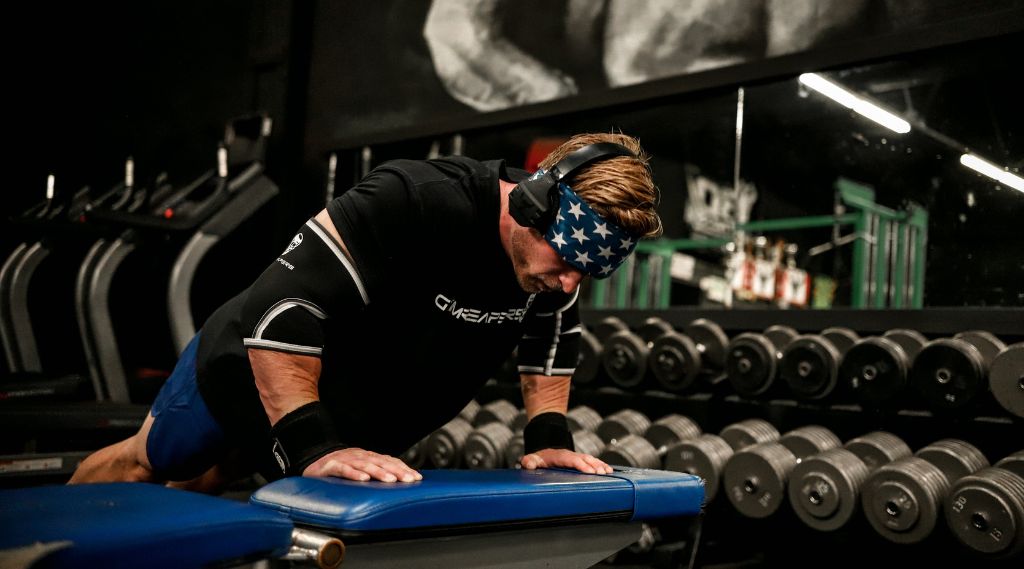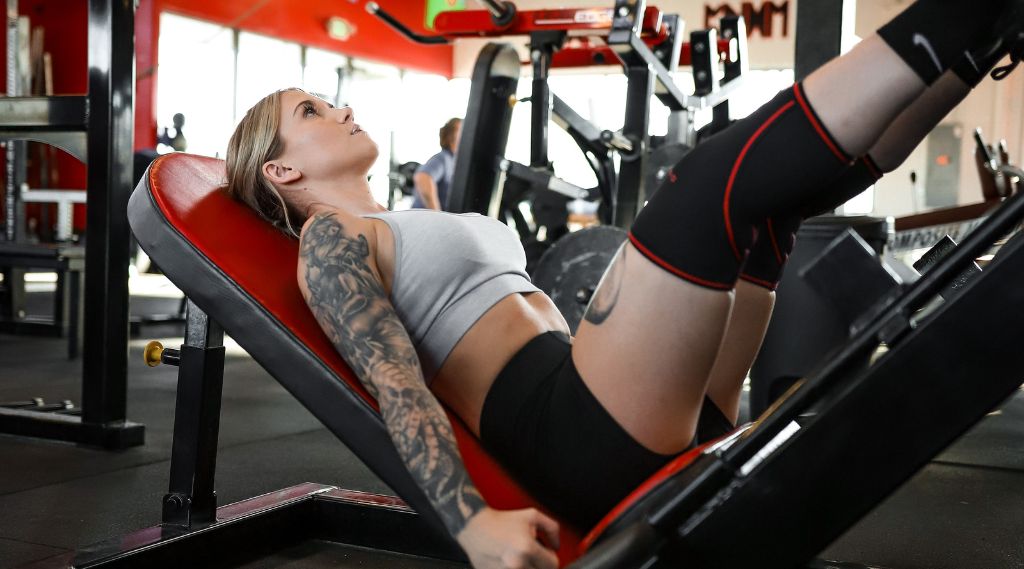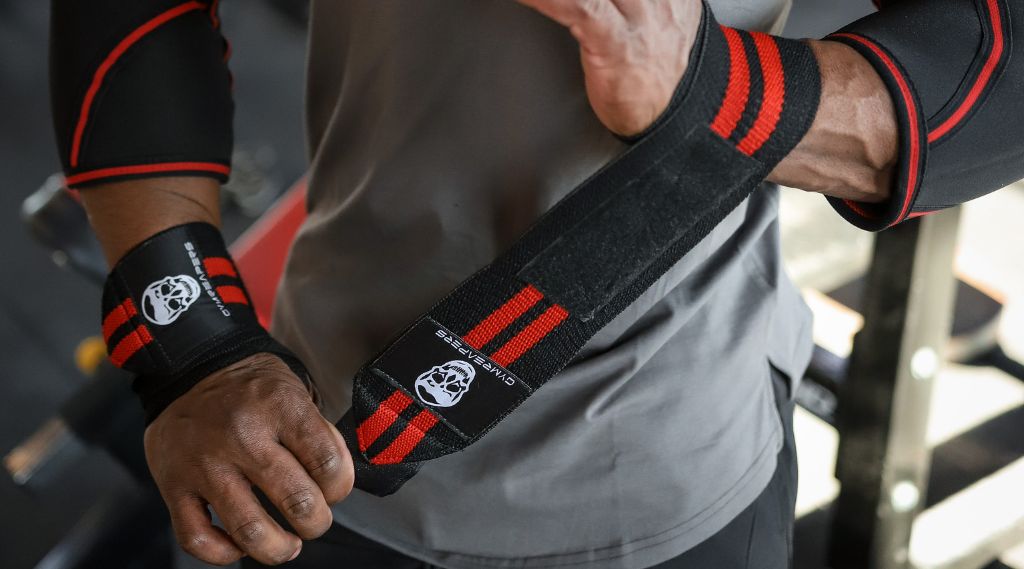Push-ups are a great exercise that work multiple muscle groups in the body, but some people miss out on the benefits of push ups because it causes pain and discomfort in the wrists.
As a strength coach, I’m often asked if wrist wraps could be used for push ups to reduce wrist issues.
You should wear wrist wraps for push ups if you’re experiencing any pain or discomfort in the wrists and wearing wrist wraps allows you to perform the movement pain-free. If you’re not experiencing any discomfort or wrist wraps are not alleviating the discomfort, then there is no need to use wrist wraps for push ups.
Before you decide whether to wear wrist wraps for push ups, it's important to understand the pros and cons of using wrist wraps for push-ups and how to use them properly.
Key Takeaways
Should You Use Wrist Wraps For Push-Ups?

To decide whether it’s worth wearing wrist wraps for push ups or not, you need to consider the pros and cons.
Pros Of Wearing Wrist Wraps For Push-Ups
The pros of wearing wrist wraps for push-ups are:
Support and Stability
Wrist wraps provide support and stability to the wrists, which can be especially helpful for those with weaker wrists or those who have had previous injuries.
By creating a protective brace around the wrist, the wrist wrap supports the joint and increases stability by reducing how much you are able to bend at the wrist joint.
Improved Strength
Wrist wraps can improve your strength by allowing you to perform more reps with proper form.
If your wrists give out before your chest, arms, and core when performing push ups, then wrist wraps can help you get in more reps and offer support. The more push ups you’re able to do, the stronger you’ll become and the more muscle you will be able to build.
Reduced Pain
Wrist wraps can reduce pain and discomfort in the wrists by providing extra cushioning and support.
Wrist pain during pushups (outside of injury) generally comes from one of two things:
- Moving your wrist into a position it isn't strong enough for
- Putting more load on the joint than it can handle
In both of these situations, wearing wrist wraps could help your wrist pain by supporting the wrists under load and encouraging better wrist positions.
Cons Of Wearing Wrist Wraps For Push-Ups
Overdependence
Wrist wraps can create an over-dependence on them, causing you to neglect to strengthen the wrist muscles. Wrist wraps are a band-aid solution, rather than actually addressing the underlying issue.
I recommend including specific wrist-strengthening exercises like wrist curls and extensions to help strengthen muscles that support the wrist joint.
Once your wrists become stronger, you should aim to transition to performing push ups without wrist wraps to build up resiliency in the wrist joint and strengthen the wrist muscles alongside your chest, shoulders, and triceps.
Reduced Range of Motion
Wrist wraps can limit your range of motion, which can greatly reduce the benefits of push ups depending on how restricted your movement becomes.
Not being able to bend your wrist back as much due to the use of wrist wraps can mean that you are not able to get as low in a pushup.
Ultimately the goal of building muscle and strength with pushups is to get as much range of motion as possible without losing tension in the muscles.
Ideally, this looks like lowering your chest to just about to the floor without touching the floor (If you did touch the floor you would lose tension by resting your weight on the floor).
Limiting your wrist movement could potentially limit your ability to go through this full range of motion, reducing your potential for increases in strength and muscle.
However, a very easy workaround for this is to use pushup stands or hexagonal dumbbells to maintain a neutral wrist (no bending at the wrist) while increasing the range of motion of the movement by elevating it off the floor.
Incorrect Technique
Wrist wraps can often lead to worsening push up technique because they provide a false sense of security. If your technique goes out the window, then you could be at risk for more serious injuries than just annoying wrist discomfort.
The false sense of security from the wrist wraps can cause some people to “dive-bomb” their push ups by collapsing into the bottom position and using momentum to push back up, which puts unnecessary stress on the joints.
Even though the wrist wraps are providing stability and support and you may feel stronger, you should still prioritize your technique by maintaining control as you lower yourself to the floor and push yourself back up.
Related Article: Do Wrist Wraps Weaken Your Wrist & Forearm? A Coach Answers
Who Should Wear Wrist Wraps For Push-Ups

The following people should consider wearing wrist wraps for push ups:
- Those with weaker wrists: If you have weaker wrists or forearm muscles and your primary goal is to build your chest, shoulder, and triceps with pushups then you should use wrist wraps for your sets of push-ups.
Pushups are a great exercise for hypertrophy when you are not limited by weak wrists. However, you should also focus on incorporating wrist-strengthening exercises as well.
- Those with previous wrist injuries: If you have dealt with a previous wrist injury and have recovered but are still worried about your wrist, limiting your wrist position using wraps can be a great way to ease into pushups.
Remember that wrist wraps will not fix the underlying issue, so be sure to consult with a physiotherapist to deal with your injury.
- Those experiencing pain and discomfort: If you are experiencing pain or discomfort that feels like pressure (not sharp or shooting pain like an injury), then wearing wrist wraps can help alleviate that pain and help you work through push ups without the pain.
Related Article: Should You Use Wrist Wraps for Squats? Coach Answers
Who Shouldn’t Wear Wrist Wraps For Push-Ups

If you can do push ups without wrist pain or discomfort, then you may want to avoid wearing wrist wraps because there is no need to add additional support and stability to your wrist; Instead, you could create an overdependence and limit your results.
The muscles of your forearms can be important for improving your physique, other lifts, and daily living. Using wrist wraps may rob you of some great wrist and forearm strengthening that can come from doing push ups without wrist wraps.
Additionally, wearing wrist wraps limits your range of motion by limiting wrist extension (how far your wrist can bend backwards). This may be a detriment to your ability to build muscle and strength from push ups by preventing you from going through the full range of motion.
Ultimately, if you’re not experiencing any wrist issues while performing push ups regularly then there is no need for wrist wraps.
5 Considerations For Wearing Wrist Wraps For Push-Ups

1. Position
Wrist wraps should be positioned on the lower part of your palm where your thumb meets your wrist joint. The wrist joining should be covered with some material above and below the joint to keep it stable.
Avoid wrapping too high on the wrist where it covers too much of the hand or too low on the forearm where none of the wrist joint gets covered.
2. Tightness
Wrist wraps should be snug but not too tight; they should provide support and stability without restricting blood flow.
In movements like a squat or bench press you will want to wear your wraps much tighter to really stabilize the joint; however, in a pushup you need your wrist to be able to bend backward to a certain degree, so a slightly looser wrap will be better.
Related Article: Do Wrist Wraps Help You Lift More? Yes, Here's How (Coach Explains)
3. Type
A shorter and more flexible wrist wrap will be better for push ups because this type of wrist wrap will allow for support to help with wrist pain while allowing for some mobility.
A shorter wrap (12-18”) will provide support without being too bulky, so it won’t feel as clunky on your wrist while performing push ups.
Stiff wrist wraps like the Gymreapers Heavy Duty Wraps wouldn’t be the best option for push ups because they don’t encourage as much mobility; these are best kept for squats and bench press.
Related Article: Should Wrist Wraps Be Stiff Or Flexible? (A Coach Explains)
4. Warm-up
Always warm up your wrists before using wrist wraps for push-ups, this helps prepare your wrists for loading and can alleviate any discomfort caused by lack of preparation of the surrounding musculature.
I recommend starting with wrist circles and stretches. You may even find that by performing some light wrist warmups and stretches before doing push ups that your wrist pain goes away and you do not need wrist wraps for push ups.
5. Technique
The proper push-up technique involves keeping your wrists in a slightly bent back position and distributing weight evenly through your hands and fingers. Wrist wraps can help support proper technique, but they should not be relied on solely to prevent injury.
Additionally, you can adjust your technique to a more neutral grip position that is less likely to cause wrist pain and will increase your range of motion by doing pushups with handles, dumbbells, or on your knuckles.
That said, this neutral position may be hard to maintain without the use of wrist wraps. The use of wrist wraps will support your wrist to allow you to have a strong neutral grip position.
How To Fix Wrist Pain From Push-Ups
The best way to fix wrist pain from push-ups is by practicing proper technique. If you are unable to perform push ups without wrist pain even with proper technique, then you will want to wear wrist wraps or adjust your technique to avoid wrist pain.
If the typical bent wrist position doesn’t agree with you, then switch to an elevated neutral grip position with wrist wraps.
Make sure to keep your wrists in a neutral position and distribute weight evenly through your hands and fingers. Avoid bending your wrists too much or allowing them to collapse inward. Engage your core and keep your body in a straight line from head to heels.
With proper technique, you can minimize stress on your wrists and avoid pain and injury. Additionally, consider performing wrist strengthening exercises to build wrist strength and reduce the likelihood of injury.
If none of these adjustments work, then you should seek additional help from a physiotherapist to address the root cause of your pain and avoid performing push ups for the time being.
Wrist Wraps for Push Ups

Gymreapers 18-Inch Wrist Wraps
The best wrist wraps for push ups are the Gymreaper’s 18-inch wrist wraps because they are flexible yet supportive so they will keep your wrist in a more favorable position without feeling too stiff and bulky.
As a bonus, these wrist wraps also come with a one-year warranty so you don’t have to worry about them falling apart after only a few uses.
Frequently Asked Questions
Do Wrist Wraps Help With Push-Ups?
Yes, wrist wraps can help with push-ups by providing added support and stability to the wrists by limiting excessive wrist extension. This can reduce pain and discomfort during push-ups caused by unfavorable positions or lack of stability under heavier loads.
Do Wrist Wraps Strengthen Wrists?
Wrist wraps do not directly strengthen the wrists. They provide support and stability, which can allow you to perform more reps with proper form. However, to build wrist strength, it is important to perform exercises that target the wrist muscles, such as wrist curls and reverse curls.













Leave a comment
All comments are moderated before being published.
This site is protected by hCaptcha and the hCaptcha Privacy Policy and Terms of Service apply.